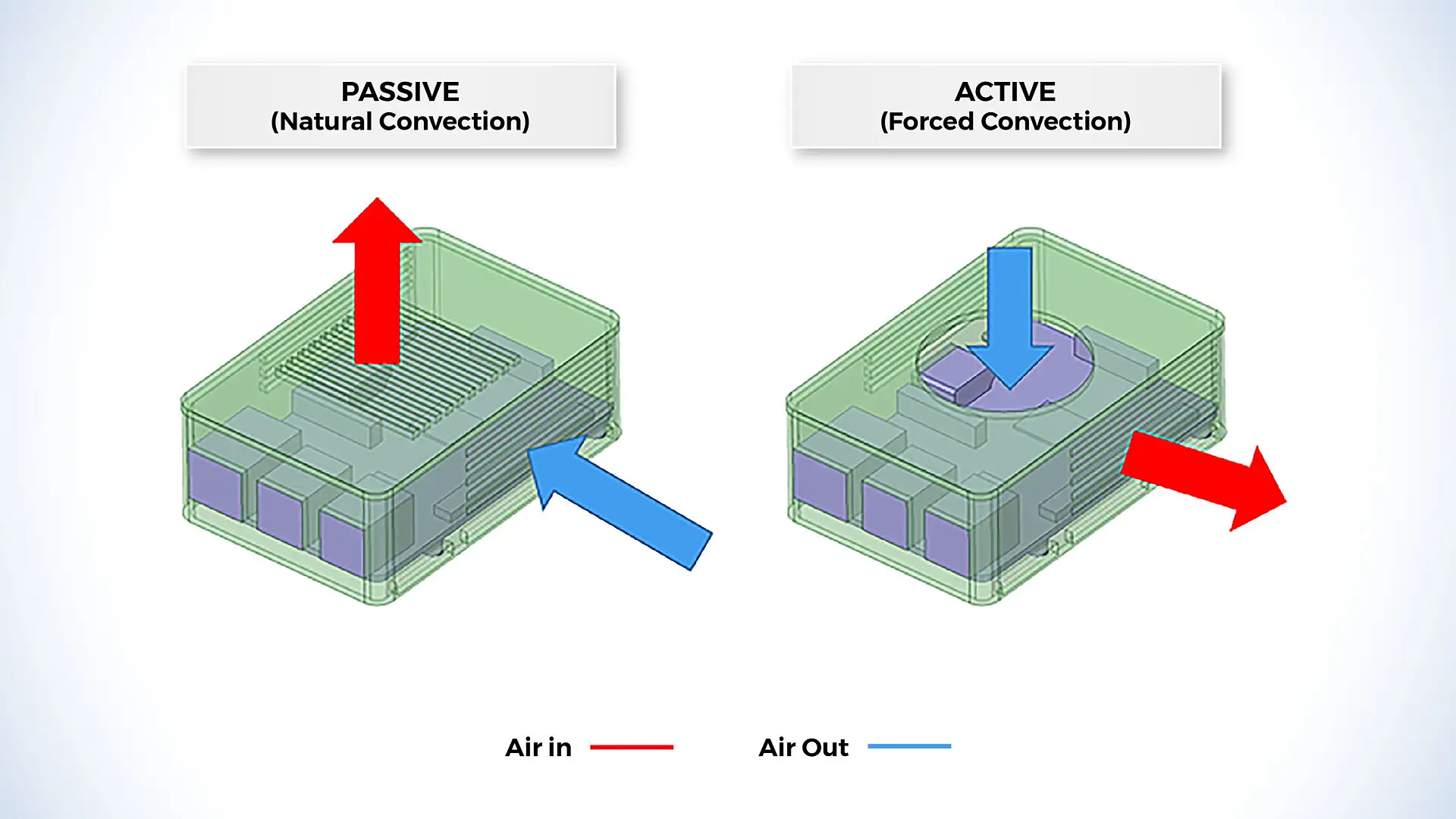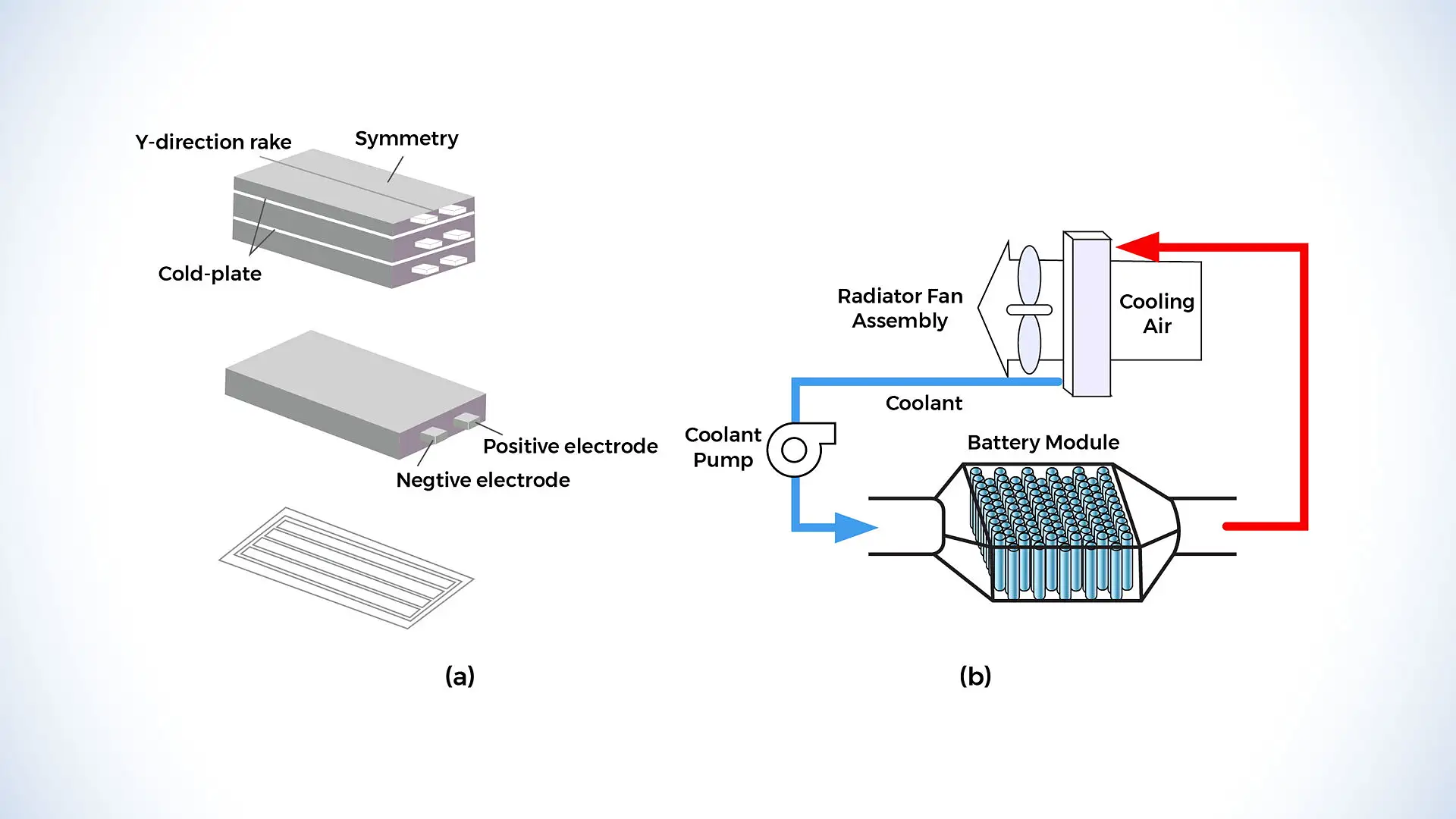
The article is co-authored by Dr Neha Choubey
Unlike conventional fuel, battery cells as an energy source have stricter necessity on the running environment, as they are mainly sensitive to temperature. To ensure a proper thermal working environment, a Battery Thermal Management System (BTMS) will normally be integrated with battery cells. Thus, knowledge about the proper working requirements of batteries is vital, including the kind of management systems that can suitably and efficiently meet these requirements.
With this keystone, the performance and durability of battery packs can be maximised in an electric vehicle. In addition, the electric range of vehicles is restricted due to the limited capacity of the batteries. It is very helpful to investigate carefully the electric energy consumption of BTMS and to look for potential savings.
Whereas advancements have been made in electric vehicle batteries that allow them to generate more power and need less frequent charges, one of the major challenges that remain for battery safety is the ability to design an effective cooling system.
Batteries work based on the theory of a voltage differential, and at high temperatures, the electrons inside become excited which decreases the difference in voltage between the two sides of the battery. Because batteries are only manufactured to work between certain temperature extremes, they will stop working if there is no cooling system to keep them in a working range.
Cooling systems need to be able to keep the battery pack in the temperature range of about 20-40° C, as well as keep the temperature difference within the battery pack to a minimum (> 5° C). Potential thermal stability issues, such as capacity degradation, thermal runaway, and fire explosion, could occur if the battery overheats or if there is non-uniform temperature distribution in the battery pack. In the face of life-threatening safety issues, innovation is continually happening in the EV industry to improve the battery cooling system.
Battery Thermal Management Systems (BTMS)
A perfect battery thermal management system has the following requirements – it needs to be compact, lightweight, easily packaged, reliable, serviceable, low-cost, and should have low parasitic power, optimum temperature range and small temperature variation.
Battery Heat Generation
In Li-ion batteries, there are two main heat generation sources – one by Joule effect, determined by the internal resistance during the transfer of electrons, and the other caused by the electrochemical reactions or entropy change.
There are several factors that influence the amount of heat generated:
- C-rate, charge/discharge current;
- State of charge (SoC) is in strong connection with the electrochemical reactions and the diffusion of Lithium-ion.
- Temperature at the electrochemical reactions are intensified and the internal resistance decreases;
- Electrochemistry: the active materials influence significantly the amount of heat generated;
- State of health with age the internal resistance increases.
Currently, one important research field is the development of improved cathode and anode materials to enhance the specific power and energy, along with cost reduction. Safety being the primary concern for both battery and EV manufacturers, it is clear that extreme temperatures must not be reached inside the batteries during the operation of electric-driven vehicles. The BTMS should be equipped with four essential functions to ensure the right operation conditions of the battery pack:
Cooling – Due to inefficiency, battery cells will not only generate electricity but also heat. This heat should be moved from the battery pack when the battery temperature reaches the optimum temperature or even in advance. Thus, a cooling function is required in BTMS.
Heating – In cold climates, battery pack temperature probably falls below the lower temperature limit. Hence, a heating function, such as PTC heater, is required to assist the battery pack to reach the proper temperature range in a shorter time.
Insulation – In extreme cold or hot weather, the temperature difference between the inside and outside of the battery pack is much larger than that in mild weather. Battery temperature will thus fall (cold) or rise (hot) sooner out of the proper temperature range. To prevent this, good insulation can slow down the fall or rise of battery temperature, especially when the vehicle is parked outdoors.
Ventilation – Ventilation is required to exhaust the hazardous gases within the battery pack. In some systems, such as air systems, this function is combined with cooling and heating functions.
BTMS Technologies
Air Cooling and Heating – Air systems use air as the thermal medium. The intake air could be directed either from the atmosphere or from the cabin and could also be conditioned air through a heater or evaporator of an air conditioner. The former is called passive air system and the latter is active air system.
Active systems can offer additional cooling or heating power, while passive systems can offer some hundreds of watts of cooling or heating power. An active system power is limited to 1 kW. Since the air in both cases is supplied by a blower, they are also called forced air systems. Figure 1 shows a schematic description of systems.

Liquid Cooling and Heating – Besides air, liquid is another heat transfer fluid to transfer heat. There are generally two groups of liquids applied for thermal management systems. One is dielectric liquid (direct-contact liquid) which can contact the battery cells directly, such as mineral oil. The other is conducting liquid (indirect-contact liquid) which that can only contact the battery cells indirectly, such as a mixture of ethylene glycol and water.
Depending on the different liquids, different layouts are designed. For direct-contact liquid, the normal layout is to submerge modules in mineral oil. For indirect-contact liquid, a possible layout can be either a jacket around the battery module, discrete tubing around each module, placing the battery modules on cooling/ heating plate or combining the battery module with cooling/ heating fins and plates. Between these two groups, indirect contact systems are preferred in order to achieve better isolation between battery module and surroundings, and thus better safety performance.
By different heat-sinks for cooling, liquid systems can also be categorised into either passive systems or active systems. In passive liquid systems, the heat-sink for cooling is a radiator. This system has no ability to heat. Heat transfer fluid is circulated by the pump within a closed system. The circulating fluid absorbs heat from a battery pack and releases heat via a radiator.
The cooling power depends strongly on the temperature between ambient air and the battery. Fans behind the radiator can improve the cooling performance, but if the ambient air is higher than the battery temperature or the difference between them is too small, the passive liquid system becomes ineffective.

Direct Refrigerant Cooling and Heating
Similar to active liquid systems, a direct refrigerant system (DRS) consists of an A/C loop, but DRS uses refrigerant directly as heat transfer fluid circulating through battery pack (Figure 3).

EVs are powered by some of the most refined battery systems available today. Improvements in battery technology have made it possible for newer EVs to be on par with internal combustion engine vehicles in terms of performance and range. But just like other battery systems, the battery units inside EVs enjoy operating in a fixed range of temperature for maximum efficiency.
Most EVs use a lithium-ion graphite anode battery. These are the same kind of batteries that you find in modern electrical appliances like your smart phones, laptops and more but just scaled up to drive powerful motors.
The reason behind this is simple. Lithium-ion batteries generate power through chemical processes. Heat changes the rate at which these chemical processes occur, often disturbing the careful equilibrium set inside the battery units. Battery units in most EVs have battery management systems that try to keep the temperature stable for this reason.
At the other end of the temperature spectrum, lithium-ion batteries also struggle at very high temperatures. This is because the 'unwanted' reactions within a battery are now occurring faster, draining the range and longevity of a battery system.
Temperature, in fact, is the most important parameter for battery performance. The effects of temperature include operation of the electrochemical system, round trip efficiency, charge acceptance, power and energy availability, safety and reliability, and life & life-cycle cost. Battery temperature also affects vehicle performance, reliability, safety, and life-cycle cost.

Conclusion
Temperature rise is the major factor that influences the functioning of Lithium-ion batteries. To refine the heat efficiency of the battery, there are various methods to dissipate the heat. Selecting a correct cooling technique for a Li-ion battery module of an EV, and deciding an ideal cooling control approach to maintain the temperature between 5-45° C is necessary.
Maintaining an optimal temperature is essential as it increases safety, reduces maintenance cost, and increases the service life of the battery pack. When choosing a cooling technique, various trade-offs are made among various parameters like weight, cooling effect, temperature consistency, and cost.
The BTMS is the most crucial element of an EV. During the charging/ discharging mode of EVs, a major focused area for the research is to maintain the optimal working temperature range of the batteries and reduce both the maximum temperature and temperature difference. Suitable and effective cooling methods will significantly reduce the adverse effect of high surface temperature of battery cells and efficiently augments the battery thermal efficiency.
It also improves the safety of the vehicles and also increases the life of a vehicle. In all the above-mentioned battery cooling techniques, liquid cooling technique is one of the most reliable and promising cooling technologies. The techniques mentioned will significantly help improve the battery performance under high charging/ discharging rates and attention should be given to compact design with cheaper cost.
References
- Alaoui, C., 2013. Solid-state thermal management for lithium-ion EV batteries. IEEE Trans. Veh. Technol..
- Alaoui, C., Salameh, Z.M., 2003. Modeling and simulation of a thermal management system for electric vehicles. In: IECON Proceedings (Industrial Electronics Conference), vol. 1.
- Alaoui, C., Salameh, Z.M., 2005. A novel thermal management for electric and hybrid vehicles. IEEE Trans. Veh. Technol...
- Bandhauer, T.M., Garimella, S., Fuller, T.F., 2011. A critical review of thermal issues in lithium-ion batteries. J. Electrochem. Soc. 158 (3), R1.
- Ellabban, O, Abu-Rub, H., Blaabjerg, F., 2014. Renewable energy resources: Current status, future prospects, and their enabling technology. Renew. Sustain. Energy Rev.
- Esfahanian, et al, 2013. Design and Simulation of Air Cooled Battery Thermal Management System using Thermoelectric for a Hybrid Electric Bus, vol. 191. In: LNEE, vol. 3.
- https://ec.europa.eu/clima/policies/strategies_en (accessed on 22 April 2021).
- EU Climate Action and the European Green Deal. Available online: (accessed on 22 April 2021).
- Fernandez Pales, A.; Bouckaert, S.; Abergel, T.; Goodson, T. Net Zero by 2050 Hinges on a Global Push to Increase Energy Efficiency; International Energy Agency, France, May 2021.
- Aneke, M.;Wang, M. Energy storage technologies and real life applications—A state of the art review. Appl. Energy 2016, 179,350–377.
- Chaitanya Pandya1, Dhrunil Timbadia, A Detailed Review on Cooling System in Electric Vehicles, International Research Journal of Engineering and Technology (IRJET) e-ISSN: 2395-0056 Volume: 08 Issue: 06 | June 2021.
- Nitta, N., Wu, F., Lee, J. T., & Yushin, G. (2015). Li-ion battery materials: present and future. Materials Today, 18(5), 252–264. doi:10.1016/j.mattod.2014.10.040.
- Ning, G., & Popov, B. N. (2004). Cycle Life Modeling of Lithium-Ion Batteries. Journal of The Electrochemical Society, 151(10), A1584. doi:10.1149/1.1787631
- Yang, X.-G., Zhang, G., Ge, S., & Wang, C.-Y. (2018). Fast charging of lithium-ion batteries at all temperatures. Proceedings of the National Academy of Sciences, 115(28), 7266–7271. doi:10.1073/pnas.1807115115
- Ouyang, D., He, Y., Chen, M., Liu, J., & Wang, J. (2017). Experimental study on the thermal behaviors of lithium-ion batteries under discharge and overcharge conditions. Journal of Thermal Analysis and Calorimetry, 132(1), 65–75. doi:10.1007/s10973-017-6888-x
About the Authors:Dr Abhishek Choubey is Head of the Industry Institute Partnership Cell at Sagar Institute of Science Technology & Research in Bhopal. Dr Neha Choubey is Assistant professor at VIT Bhopal University, School of Applied Sciences & Languages.